You want to live the modern warrior’s way of life and add physical fitness and martial arts into your lifestyle. But how do you start?
How do you find time for it? How do you stay motivated if you’ve fallen off training?
This list is meant for both beginners and experienced modern warriors who are struggling to stay on the training path. Be open to the tips given by people who have made training their lifestyle. Don’t shoot down possible ways to make training work in your life.
Here are 41 tips by people in various activities like martial arts, parkour, street workout, runners and other fitness-related activities.
Getting Started in Fitness and Martial Arts
This section is useful for people who are figuring out how to start.
1Make training an important part of your identity
Until you make fitness and martial arts an important aspect of your identity, you will never regard training as a priority – something you make time for.

Martial artists, traceurs and fitness athletes see themselves as martial artists,
traceurs and fitness athletes respectively. It is an important part of who they are. […] They are compelled to reinforce who they believe they are. This sense of identity makes them committed to train.
Logen (The Only Secret to Stay Motivated in Fitness & Martial Arts)
2Believe in yourself to achieve what you set out to do
Never start training with the expectation of failure. If you do not believe you will succeed, you create a mental barrier. Why would your body go all out to master a technique when your subconscious mind thinks it’s impossible?
Believe in yourself in every stage of your training.

3Know why you are training
Know your core purpose and motivation to train so that you succeed in making training a sustainable lifestyle.
No. Don’t give surface-level answers like “becoming fitter”. You need to drill deep into your core to find out why you want to do this – what drives you to start parkour for instance. Read Steve Roy’s article on this, appended with his quote below.

This is relevant to you because it’s the same basic principle. I’m not trying to sell you a gym membership, but I am trying to get you to understand why you are spending your precious time and energy training, eating well, and trying to get fit.
Your answer is going to be your ticket to continued success in regards to your health and fitness level.
Steve Roy – Why Inspiration Beats Motivation Every Time
4Know what you want, work with limitations and make sacrifices
Imagine the results of your training. What do you want at the end of it all?
Figure out your limitations (be it time, work schedule or injury) and priorities (in family, social, career, etc.). Then, decide what kind of sacrifices you are willing to make and how you can work with those limitations to achieve your vision.
Be realistic about the results if you cannot give it your all.

Be Open to Ways That Can Make Training Work
To a beginner, I would say to keep an open mind. There is no prescribed method to commit your time and yourself. You have to see how the martial arts fit your life and decide what level of commitment you want to make. There is no wrong answer. Just know that your commitment must match your goals. You can’t become a black-belt by practicing once a month.
Noah Lekas (owner of a part-time martial arts school and also an obstacle racer)
Break Limitations
Those with limits are the ones who cage themselves. Limitations begin in the mind (and) then take physical manifestation. So I say to destroy your limits. Free your mind from words like “I can’t”, “I don’t have the time” or “(I don’t have) the energy.
Tyler Hartwig
Make Do with Limitations
I try to adjust my schedule to fit in at least an hour of training every two days. This is far from ideal but it is enough to keep me from getting too rusty.
Individually we train whenever we get the chance, no matter how little the amount of time we train.
Work Around Your Schedule
If they are determined to start working out then they are going to have to try and work around their schedule. They can make the time even if it is just 30 minutes a day.
Shiri Lacycarides
5Set goals and break them down into steps
You won’t become a black-belt overnight. Neither will you be able to do muscle ups in that time frame. List your goals and break them down into progressions. Do it too quickly, you risk overwhelming yourself and losing motivation.

6Get your basic needs right
Proper nutrition, sleep and hydration is essential to training. Also, make your sleep-wake routine predictable.
Most of the issues with training motivation comes from fatigue, headaches and laziness. If you’ve focused on your health through getting your basic needs right, it eliminates many potential excuses to avoid training. And if you’ve made your routine predictable, it is easier to schedule training.

7Start small - Build Momentum
It is easy to get paralysis-by-analysis when you start your training journey. What do you train in? What’s the best workout routine? What’s the best martial art?
Don’t get obsessed over the “best” routine, quick results or how long you should train.
Work with a simple program with the single goal of getting started and building momentum for greater things. You can either optimise your activities once you’ve gained traction or forever analyse the best activity to do and never start.

Seinfeld Strategy – To Build Momentum
This is where you out a calendar somewhere visible, like on the wall, and mark off every day that you’ve managed to do your target behavior with a cross (e.g. 20 minutes of practising kata; attend class; etc). The crosses start to form a chain, and the longer it gets, the more you feel like you can’t bear to break the chain.
I first read about this on James Clear’s website and he’s great.
8Journal your training
Start a training blog or keep a private log of your training.

Keep a journal or video/pictorial journal of your progress. This holds you accountable to change. If today you ran a half mile, or practiced parkour for an hour, your journal will track how and when you improved. You can use it to find trends in your improvement, too!
Finding Your Passion
This section talks about finding an activity that suits your passion.
9Train in something you are passionate about
You should train in activities that: (1) fit into your goals and (2) you feel passionate about.
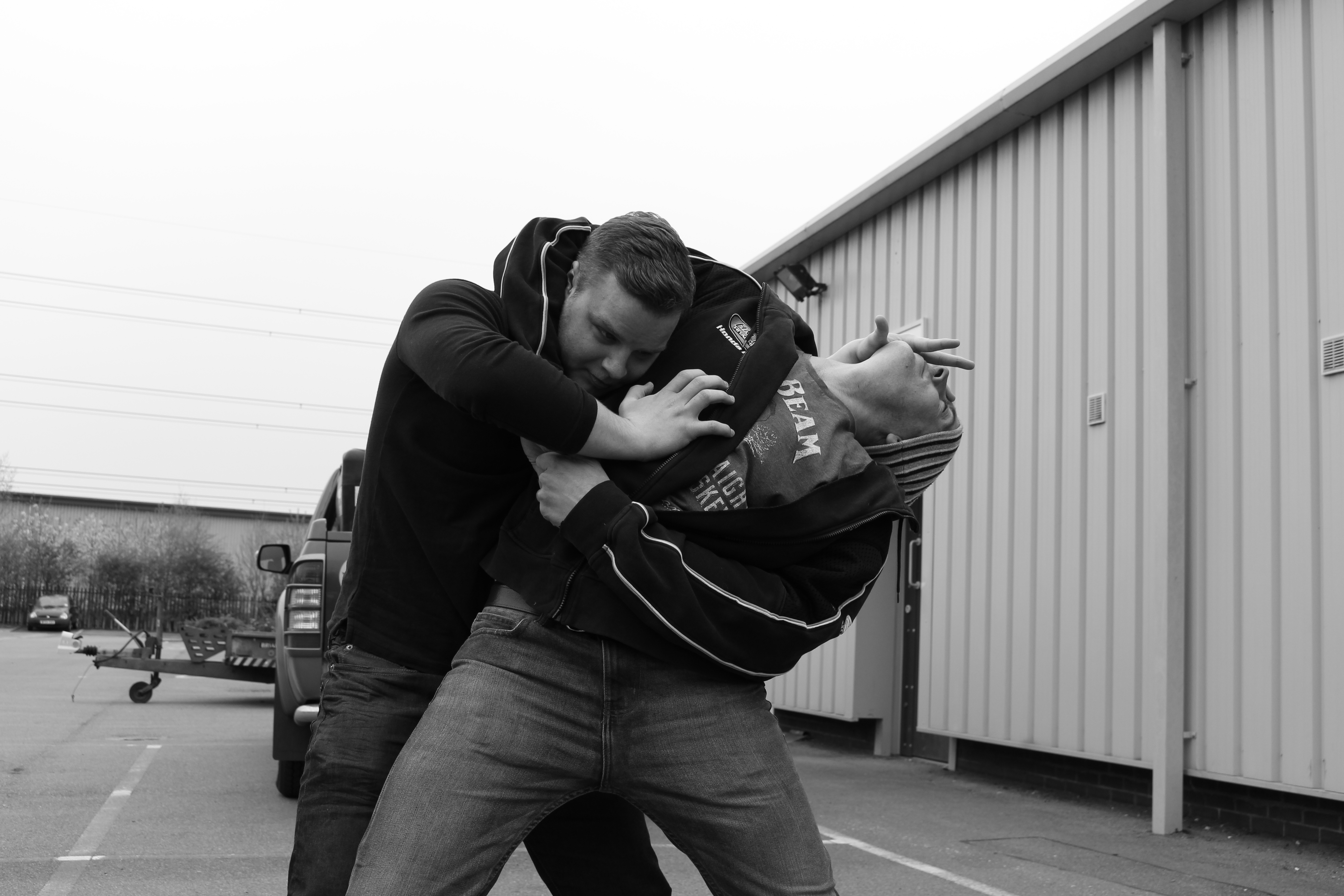
I knew from an early age that martial arts was going to be a passion for me as I thought about it all the time. Practiced all the time and wanted to train all the time. That passion reached a peak when I was in Australia training under sensei Joe Thambu as a live in student and training full time. That passion for martial arts will never leave and now it’s being put into my own Defence Lab Lincoln Academy.
10Experiment with new activities and classes
Look for classes near your area. You can even refer to a role model’s program for training ideas. But don’t obsess over finding the perfect activity. There are many paths up the same mountain.
Tip: Try Meetup groups in your area.

Look for new fitness routines. Is there a gym nearby? A martial art school? Yoga? Make your work out a night out. Plus, it will take your mind off your daily work and other challenges.
11Eliminate what you do not enjoy
Nobody enjoys their activity and training all the time. Some days you just hate it or are bored of it. That’s normal even if you are passionate about it. So, it’s no reason to quit.
However, if you have only deep hatred for the activity you are training in and there are alternatives that help you further your goals, it’s time you eliminated that activity from your life.

Delete activities you don’t enjoy. If you hate running, it is probably not the best activity for you because you will dread it, and not want to continue. You have to feel good about your progress and your improvement for it to work for you.
Making Sure You Train
12Block out time in your schedule
Schedule your workout days on a physical calendar or app. Do not let anything clash. You will be mentally-prepared.

Well, first I recommend using a calendar. Preferably one that also lists time throughout each day. For me, having the events of the day lined out I can mentally prepare myself for the day (because being busy is just as much mental as physical at times).
Geremy Davis (Parkour Instructor’s Assistant at B.A.S.E. Fitness Inc.)
For me, it comes down to boundaries. I block off certain times for certain activities. I don’t deviate unless there is an emergency.
13Don't rely on motivation - Be disciplined
Build the habit to train even if you don’t feel like it. Or choose to build the habit to skip training.
There will be some days when you just don’t feel like training. You may even dread a certain component of your training. This is normal even if you are passionate about an activity.
But you just train! You don’t have to feel like doing something, to do something. Most of the time, once you start, you will enjoy it.

Habit was the reason why I couldn’t stop myself from working out even though I didn’t want to do it and had plenty of good reasons to not do it that day I was leaving for my flight. I felt an uncontrollable urge to do some sort of strength training, and when I started my strength training habit, I felt the uncontrollable urge to do my full workout as usual, despite my intentions to do less.
Lori O’Connell – Discipline is the New “Motivation”
So you decide to skip Karate, just one time.
No problemo, right?
Wrong.
You see, although you don’t know it yet, you’ve just started a habit. A deadly habit, may I add. Because, gradually you may find yourself coming up with more and more bad excuses for skipping training.
Jesse Enkamp (How to Never Lose Motivation for Training Karate)
14Train immediately after getting home from work
If you are going to rest on the couch before working out – you are unlikely to train. Lethargy will set in. Get home, get changed and then train.

Once I get home, I grab a jump rope and head outside for a few minutes of warm ups. Then, I’m ready for the rest of my practice, whether it’s martial art forms, weights, or a jog.
15Get support from friends and family & rope them in
When starting a new routine, tell your family and friends about it – especially if you see them often. That way they know your training days and can accommodate your new lifestyle routine.
It’d be better if you can rope them in and schedule workout meetups. Cancelling involves telling them an acceptable excuse, making it less easy for you to get out of training.
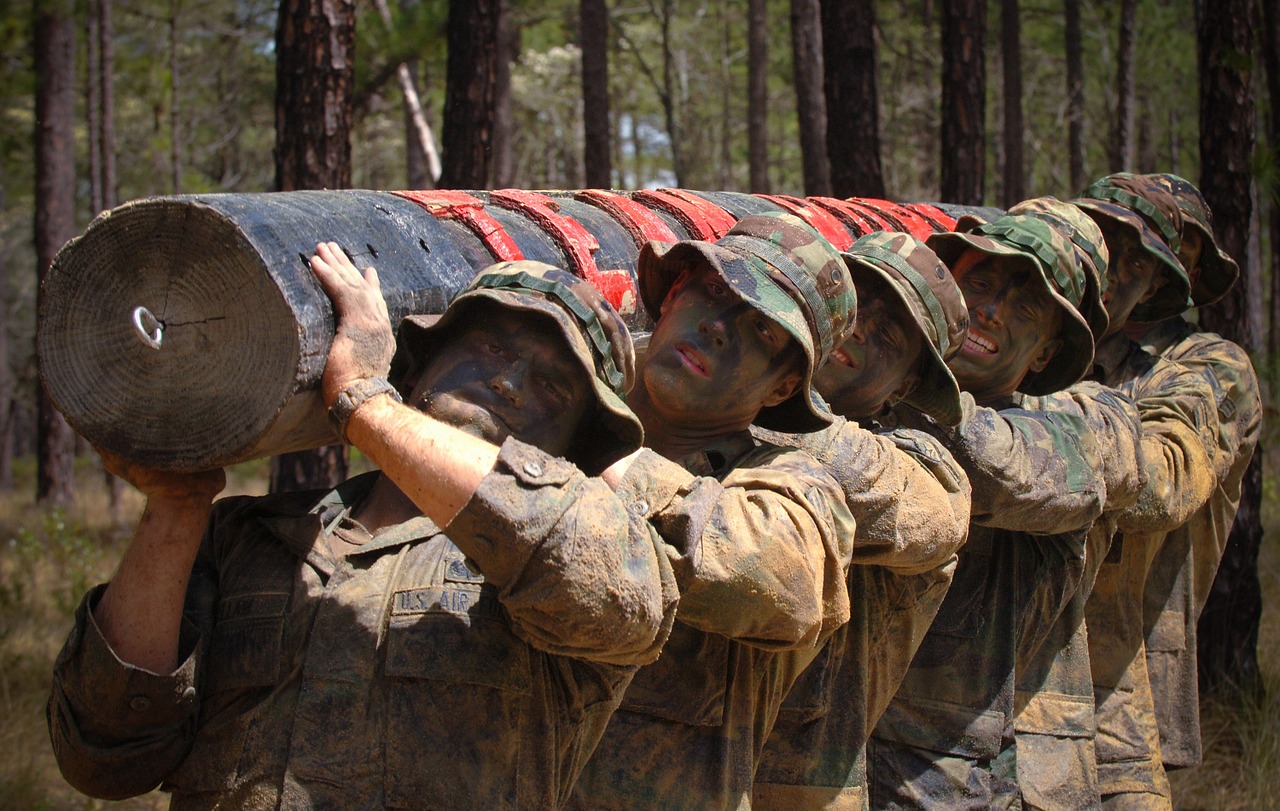
[…] She was/is understanding and supportive. Part of the reason for her understanding/support was her own passion for long distance trail running which I was very supportive of. Sometimes one of us would choose not to do something so the other could. Sometimes we went our separate ways to pursue our respective passions. We always worked it out, though.
[…] get other people involved, cheerfulness in the face of adversity is much more easy when you’ve got a friend to share the experience.
16Make a career or volunteer in martial arts, fitness and parkour
If you make a living or volunteer as an instructor in martial arts and fitness, you are making it an intricate part of your life.

I love helping out at these seminars. I love sharing my art, for one. My art is somewhat obscure in the scheme of things and introducing it to new people is so fun. I love helping people become proficient and confident in what we’re teaching them, too. It’s a blast.
Jackie Bradbury (Chillax)
Making Time to Train When Life Gets in the Way
17Train early in the morning before work or late in the evening
Find time to train before or after work.

I always try to make time to find at least 2 hours out of my day either it be morning or evening to go for a run and workout.
Shiri Lacycarides
I make time by either going before work or after late at night to me, martial arts is all about adaptation which means when life gets in your way for training you make time.
Tyler Hartwig
18Be a weekend warrior
Unpredictable weekdays? Train during the weekends.

Weekend Runner
Currently I am a weekend runner and my goal is to finish HM with less than 2 hours. In my opinion base of this is proper schedule even if I run only two days of week.
Wojtek Szymanski
19Training in daily life situations - Movement snacks
Feeling sleepy – do push ups. See a fence – vault over it. Brushing your teeth – do squats. Going up your apartment – take the stairs.
Be spontaneous and incorporate training in regular life.
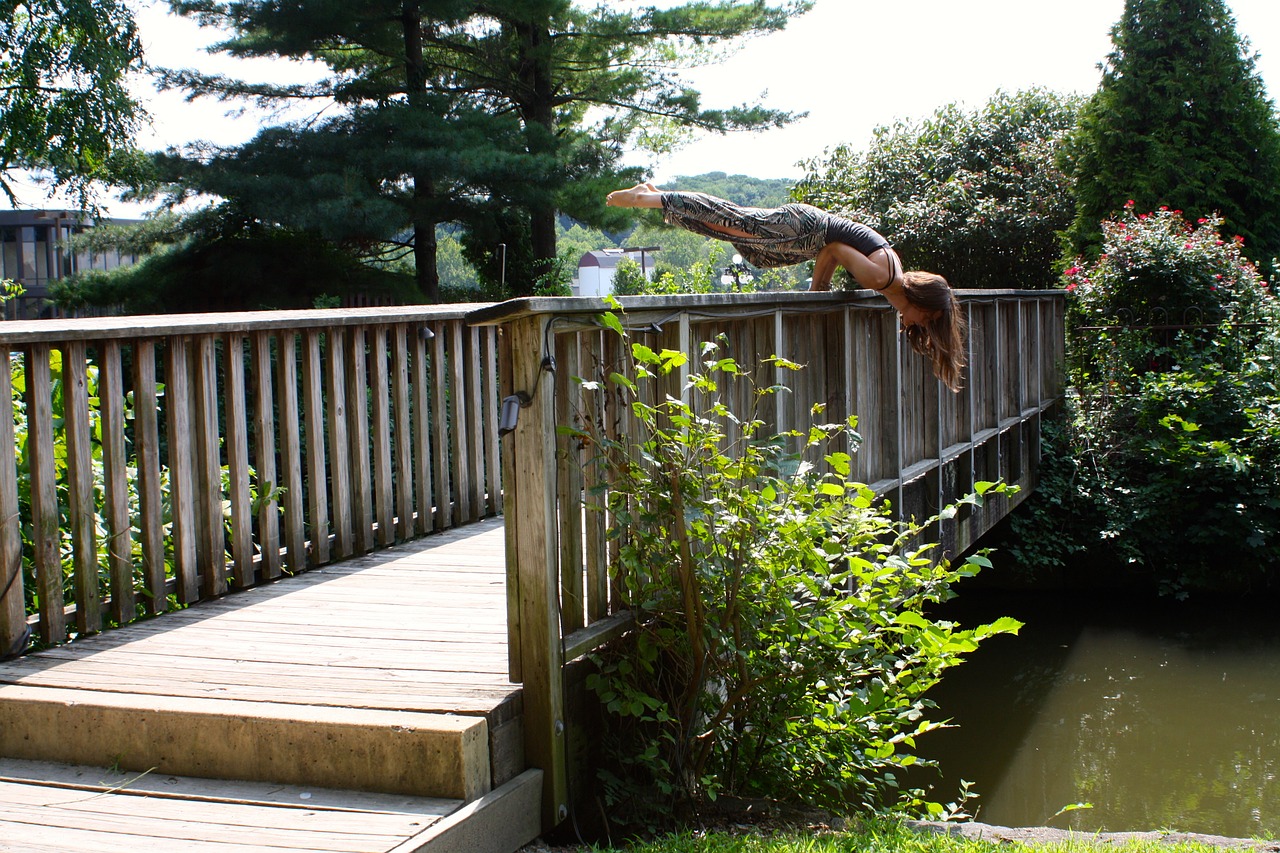
Movement Snacks
Mixing small pieces of practice into daily life (movement snacks, as Frank Forencich calls them) has been a great way to always get a little practice, regardless of where I am. Balance drills while waiting for people (or walking places), using any excuse to level transition, vaulting rails just because they are there and even arbitrary precision jumps on whatever is around.
Linking Up
If you want to make fitness a lifestyle and not just a hobby, then link exercises to your normal daily activities. For example, when you brush your teeth, drop into a horse stance. When you turn the lights on and off, use your foot. When you jump into bed, literally jump into bed. When you wait in line, do some slow calf raises. When you head to the kitchen for a snack, shuffle instead of walk. By linking what you want to do with what you do already, it’s easy to stay on track.
Martial arts is the one thing I can do anytime or anywhere. Whether I’m travelling with work or away on holiday. I find when I’m sweeping the yard my broom becomes a staff and I practice form.
Sam Rai (Jujitsu instructor via Facebook messenger)
Crunch Time
You can stretch while watching television. You can balance while brushing your teeth. You can do a push up in five minutes before school. You can walk up the stairs at home or at work, or use your lunchtime for a walk outside.
20HIIT for shorter workouts
Use HIIT (High Intensity Interval Training) and Tabata workouts to cut your training time, while maximizing the benefits.

I am a great fan of HIIT (high intensity interval training) i.e. you take four or five simple exercises and just completely go for it in a very short time limit. Most full HIIT workouts can take as little as half an hour to complete!
Jack Sharp (martial artist at Samurai-Do via Facebook messenger)
21Free up time during commute
Use the time on public transportation to get small administrative tasks done. It will free up your time.

In order to make that hour available I will usually try to combine tasks, my journey to college often took a while so I would do assignments in that time. whenever I had a free minute that I had nothing planned I would do a small task that was planned for later in the day such as washing up dishes. These simple things seemed to free up a lot of time that I wouldn’t have otherwise.
22Replace bad habits with short training sessions
Do you indulge in bad habits (e.g. snacking on junk food, smoking, etc. )? Try replacing the habit with mini training sessions – martial arts form practice, tabata workouts, etc. It will help break habits you wish to change.

23Share your goals with the world and be accountable
Share your training goals with people who will keep you accountable. The pressure will make you take action, unless you enjoy having the reputation of being a hypocrite.

[..] trying to motivate others to choose the healthier path helps me keep on track.
24Join races, competitions, tests and gradings
There will be troughs in your training journey. Schedule competitions, tests and training-events to ensure you do not falter.
What I’ve done in the past was to schedule competitive runs, obstacle course races, Aikido grading and other informal accountability events. There is no room for laziness, when you need to prepare yourself for tests.
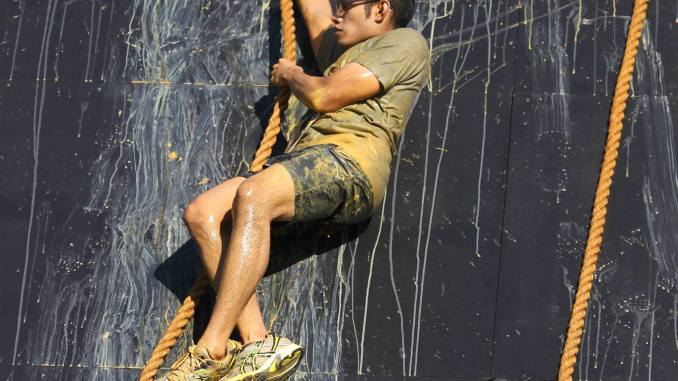
Despite questioning my sanity for joining Lion Dash Sprint 2014 just a day before my 2-weeks military reservist, I had an enjoyable experience.
Logen (My First Obstacle Course Race: Lion Dash Sprint 2014)
25Pick a rival and be competitive
Friendly rivalry helps spur progress. This person can be someone from your dojo, community or a random runner at the park (just don’t be weird about it).
When I go on runs, I some times pretend that I’m competing against any runner in front of me.

26Compete only with yourself
Friendly competition aside, compete only against yourself. Training is not an ego game and it definitely is not a measure of your self-worth.
When you compete with your ego and compare progress to others, you are on the way to self-destruction.
Go at your own pace. Be the best ninja-version of yourself.

Mission: to be the best ninja version of yourself in mindset, physical ability and knowledge.
Logen (How To Be a Ninja in Real Life? Modern Warrior Guide)
Rousey had so deeply identified with her unbeatable persona that when she inevitably lost a fight – and it was inevitable that she would – she believed her life no longer held any meaning.
Jackie Bradbury (About the Competitive Spirit)
Ultimately, each of us has to do what is right for us. Comparing to others is rarely fruitful (there are exceptions, such as using a role model for inspiration but, really, that’s not “comparison” so I’m not sure it applies).
27Make training a game
Don’t take training too seriously, especially when you are trying to nail a technique. Have fun.

A lot of times I have worked towards a goal, for example, when I first started practicing gap jumping. I was always too afraid of not making the leap, so I made a game out of it. I would tell myself silly things such as the cop are chasing me, you’re Indiana Jones running from a boulder, or you’re in a dream knowing you can do anything.
Basically to have fun in your training. To me life is like a game, so I took my training as also being a game. I laugh when I fall and i celebrated when i succeed. In time, my fear turned into fun, but the feeling of succeeding never left.
Training in the downtown area of my city, I noticed a lot of people took their training way too seriously, being frustrated with themselves for not doing it right the first few times. I’m sure that’s the reason a lot of people stop training altogether within a few weeks never to return to it.
Eric Olsen (on freerunning and gymnastics training via FB messenger)
Avoiding Burnout & Boredom – Dealing With Training Issues
28When life happens, be flexible
Accept that emergencies happen. Circumstances of higher priority may also crop up. It is okay to break routine occasionally. But make it up.

You have to make exceptions many times throughout your life. I train in MA 4-5 times a week for usually 2 hours each workout. Sometimes I have to cut a workout short because I have to study. Sometimes I won’t train at all that day because I have a date. Whatever the case may be you have to remember that you have a life outside of MA. There is a whole world out there to see, experience, etc.
Jarrod Jones (Martial Artist)
29Don't sweat every detail
Training and fitness should not be a source of stress.
The moment training becomes a source of stress, you will resent it. Relax your standards and don’t try to control every aspect of your training and nutrition. Choose your battles.

I’m not always 100% strict with my eating, I have two children and I believe the fitness lifestyle should complement my life not restrict it, basically if I want a Dominoes 2 for Tuesdays, I’m going to have one…. But track it into my daily macro nutrients and calories also, I’m not a complete nutcase.
Dan Harding (Giving Jamie Oliver a Run For His Money)
30Be spontaneous - add variety to your training
Feeling bored of your routine? On the verge of burnout? If you always do the same routine and push relentlessly, you are making yourself resent training.
Switch things up completely. Go easy. Train with no objective in mind. Or just go for a long hike. Listen to your body.

31Train at different places
Switch training places, visit other dojos and participate in street workout/parkour jams with different groups. Sometimes a change in environment gives you a different perspective and even valuable insights on training.

I have personally made it a point to visit other dojos when travelling overseas.
32Don't let anxiety stop you - Challenge yourself
Do you subconsciously avoid training because of anxiety over making mistakes. Challenge yourself.

Overcoming an inferiority complex involves battling against the vicious self-reinforcing cycle of a false underlying belief in your inferiority. By believing you are inferior (due to some weakness – real or imagined), you will inadvertently influence your behaviour and actions to prove that belief right. Each time this happens, the inferiority complex and anxiety gains more power.
Logen (Dealing with Anxiety in Martial Arts and Sports as a Slow Learner (Part 2))
Here’s what Sean had to say in response when I spoke to him about training in public.
Yeah, I was self-conscious about it for a long time (about a year, maybe), but with enough practice it becomes less and less of a concern. I don’t think about it much at all anymore. For myself I practiced around a big college campus, so I got used to people being around all the time.
You can progress that sort of practice too. Start with seemingly more ‘acceptable’ or less weird movements and as you get more comfortable do things which are more unusual (QMs, climb-ups, etc.). At this point I’ve turned the thing into a little game, where getting weird looks is actually an accomplishment rather than something to avoid.
Sensei gave me a choice after warmups and a drill – did I want to lead the colored belts in moving basics or teach newbie white belts? My first impulse was to teach white belts. But then I realized I wanted to run away from the other option. I’ve never led moving basics for a group of colored belts and more experienced white belts. I didn’t want to move outside my comfort zone. So I put on my big girl panties and I told Sensei I’d like to lead moving basics.
Joelle White (February 2016 – Teaching Others 3)
33Rest and recover
Know when to rest and recover. Your muscles recover and muscle memory gets activated during rest. And with tendons, it takes much longer to recover if you’ve been pushing too hard for far too long.

When you’ve made training a lifestyle, you might fall into the other extreme and avoid resting. I have trained when infected with the flu virus and fever, and nearly blacked out. I have also ignored pain, which then contributed to a partial rotator cuff tear and tendinosis.
34When facing life's difficulties and emotional lows...
At your lowest point, continue training in a way that you can. It gives spiritual insight and relief.
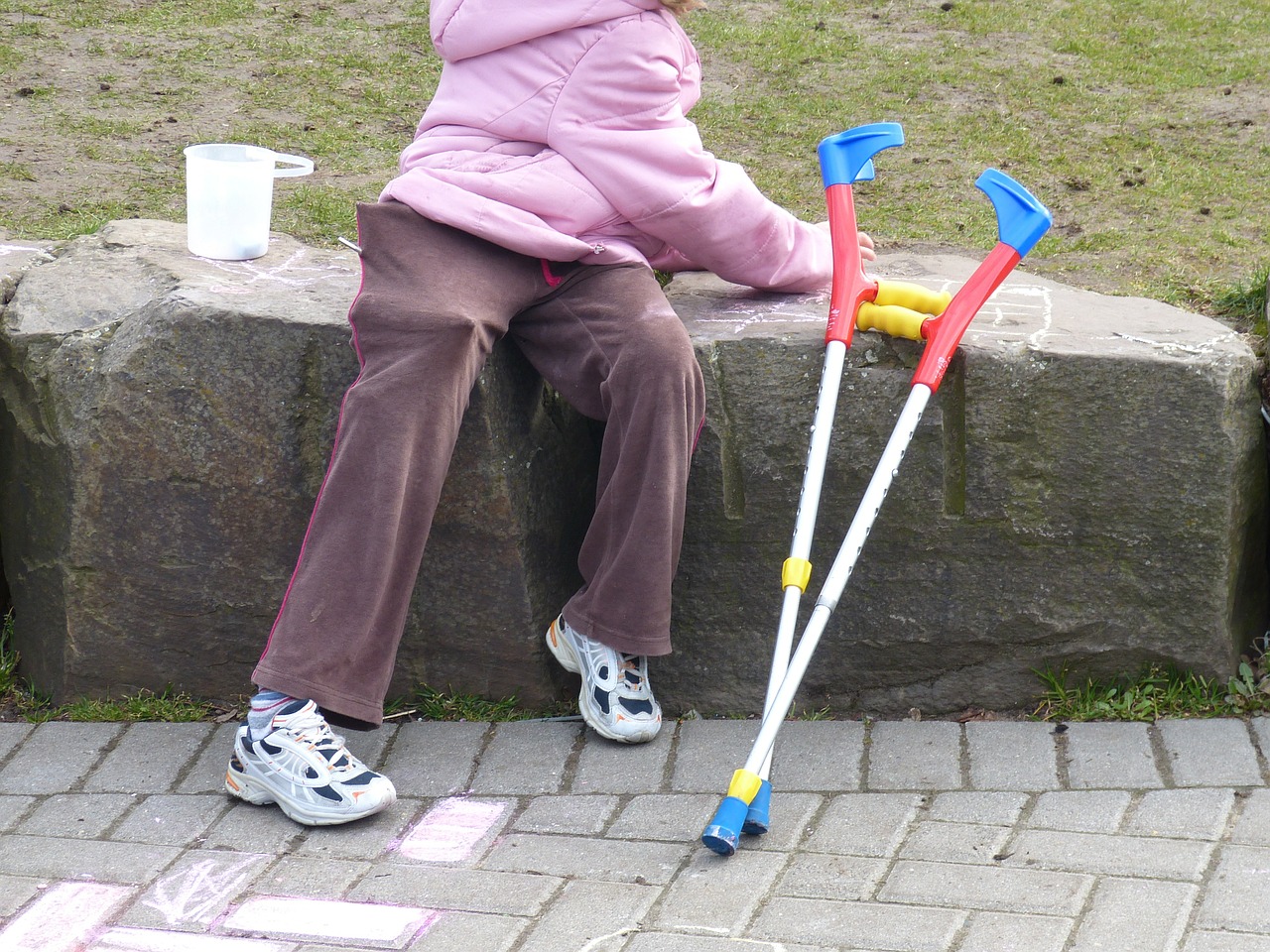
When my daughter was in hospital waiting for a hip replacement, I used to pull her crutches as part of them made excellent tonfa substitutes. We were in a side ward so I could practice my kata to get ready for grading.
Motivation can be difficult but the only person who can stop you from training is yourself. Usually when I feel like I want to give up and I force myself to train that’s when I have the best training session.
35Smile when training
While in basic military training, the commanders and physical training instructors drilled into us to not show exhaustion in our faces. The rationale was to not drag the morale of your fellow platoon-mates; everyone was tired. But by showing a positive expression of determination, you motivate the group and yourself.
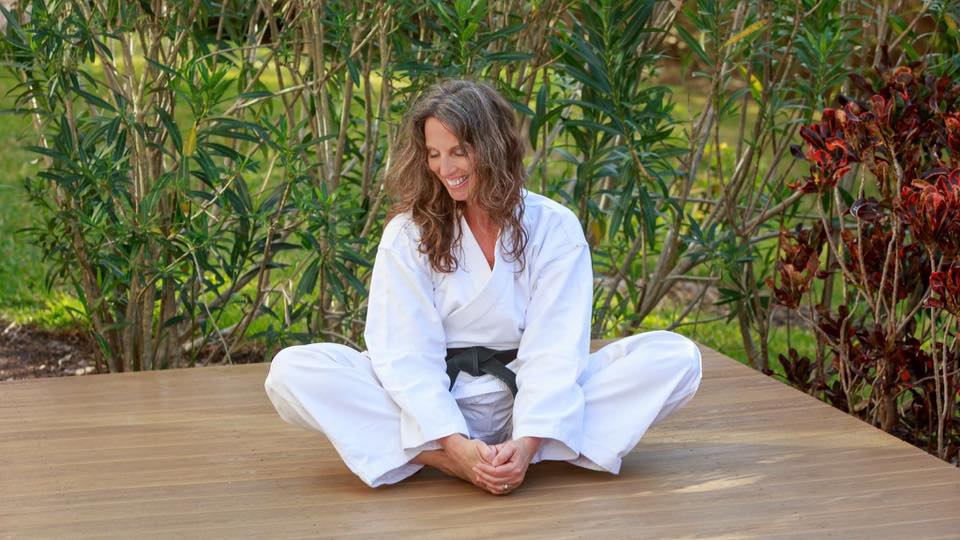
When you smile, you feel a lot better about yourself. It’s a little secret I use quite often. When working out, instead of being neutral, let loose a big smile that will remind you that you are doing something great for yourself. Those around you will appreciate it too.
36Reward yourself
Take the time to acknowledge your progress. It makes you feel good and will spur you to do better. Get new workout clothes or weapons.
I’ve been setting mini fitness goals and if I achieve them before time I get a new weapon.
37Connect with the active community
To feel a part of the community, you need to seek them out. It plays a huge role in seeing yourself as a martial artist and/or athlete. And you can get training tips.
Start by joining global and local fitness, parkour and martial arts groups on Google+ and Facebook. Find out if there are Meetup groups in your area.
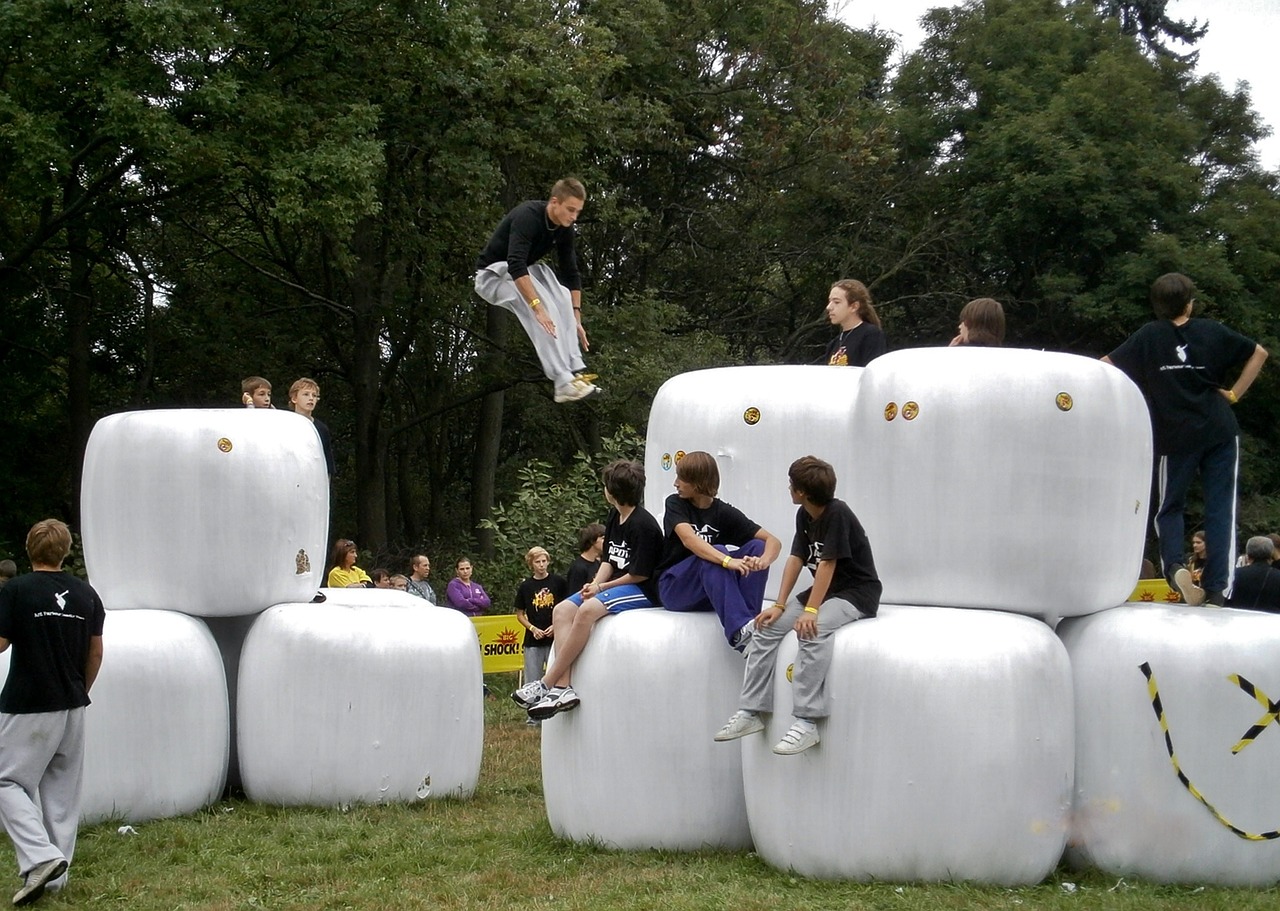
Join Way Of Ninja’s Google+ community.
38When training feels especially torturous
Some days at training might suck, maybe because of fatigue or stress. Don’t add frustration to the mix. Slow down your pace, relax and ease into it mindfully. Take the movements as meditation.
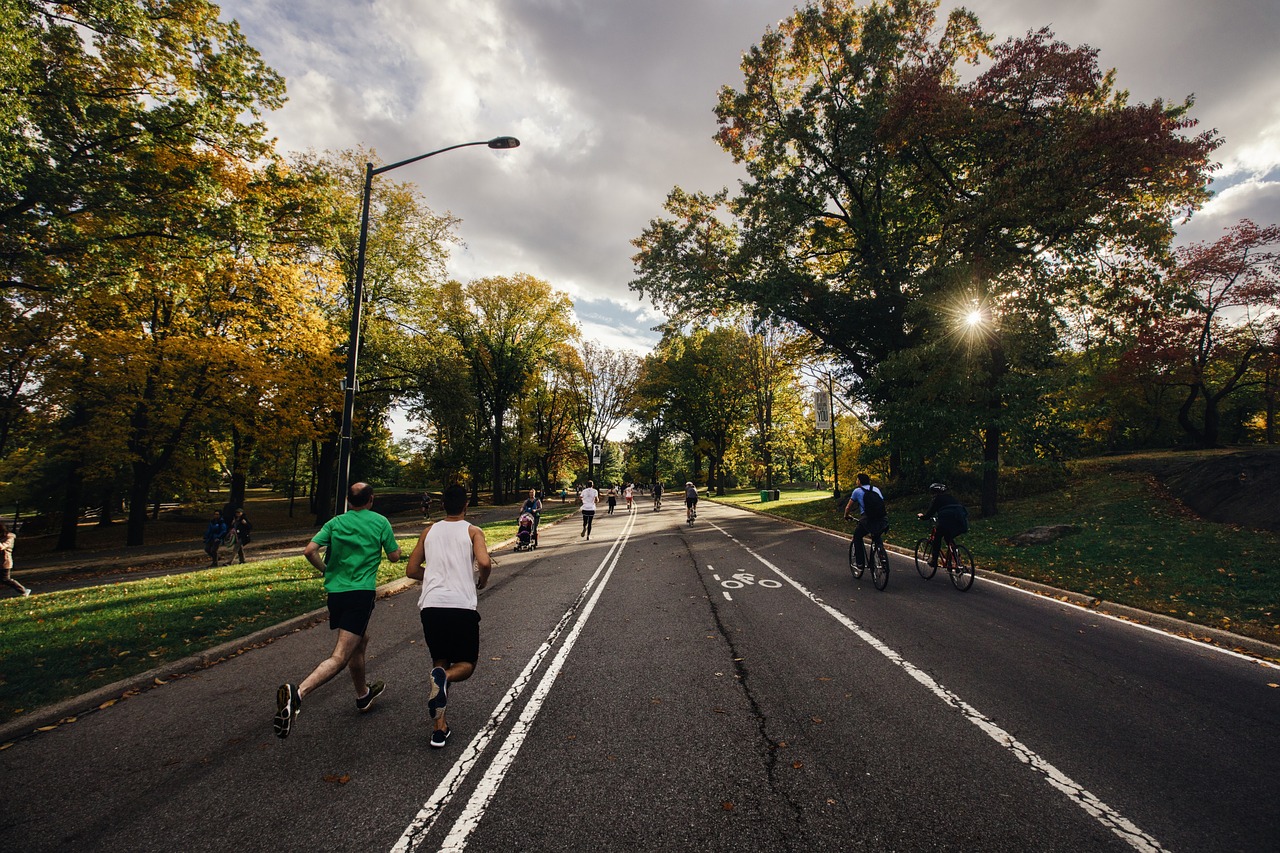
[…] it’s horribly frustrating when the first mile of a run feels like mile 26 of a race.
Today as that frustration started to appear, I did something different. I didn’t fight it. I didn’t get angry. I stopped and smiled.
I was running.
[…] Sometimes we spend so much time trying to PUSH the rock when if we just relaxed a little it would roll all on it’s own.
39Dealing with failure

Rather than focus on why you can’t fix that ONE big problem in your life, I’d like to think about how that struggle against your biggest problem has shaped you. What knowledge have you gained as a result of that struggle?
Charles Franklin (Hunting with Lions: Dealing with the ONE Big Stressor in Your Life)
40Be inspired by fellow athletes and martial artists
Everyone needs inspiration sometimes. If you are struggling with training, know that there are others in the same boat. Look to the role models and regular folk in your activity and read stories about their struggles and successes. Click on any person’s link for their blogs or social media profile.
41Motivational Quotes
And if you ever need motivation – check out motivational quotes via #fitnessmotivation.
Takeaway
The only way for you to become a modern-day warrior is to start training and make it a sustainable lifelong journey. If you found this list of tips and advice useful, put it into work. And let me know if you have any of your own tips to add in the comments section.
Really, it boils down to putting one foot in front of the other. The speed at which we do so must be guided and set internally based on our own goals, priorities, and an honest self-assessment of our abilities.
Mike Castos
Please share this list with anyone – students, friends and fellow warriors – who you believe will find this useful.
Acknowledgements
This was originally a compilation of insights, tips, and advice from people in the fitness and martial arts community I’ve connected with on Google+, Twitter, LinkedIn and Facebook in 2014. There were 21 tips in the first published version. The current update includes quoted responses from more connections and experts.
Special mentions to Andrea Harkins and Kai Morgan, who both shocked me with their respective few-pages-long tips and perspectives in contrast.
Share this list with people who will find this useful!







![18-Year Old “Samurai” Martial Artist – Jack Sharp [Interview Case Study]](https://www.wayofninja.com/wp-content/uploads/2016/06/Jack-feature-420x280.jpg)